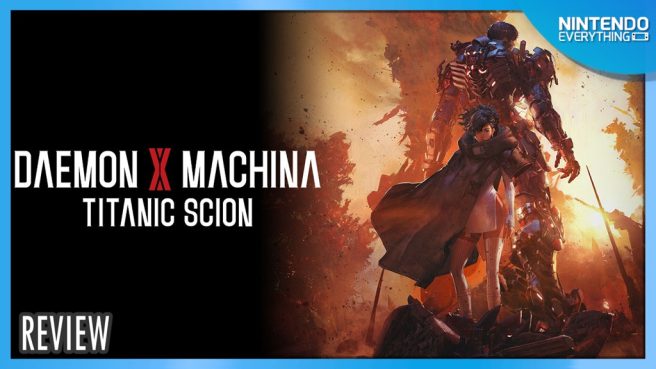Daemon X Machina: Titanic Scion review for Nintendo Switch 2
System: Switch 2
Release date: September 4, 2025
Developer: Marvelous
Publisher: Marvelous
If a game is going to let me rip across a futuristic planetscape in a mech suit and decimate a seemingly endless array of robotic and rancid foes, really the only thing it needs to do is make those core actions feel as satisfying as possible. Daemon X Machina: Titanic Scion is a game of many parts, but if there’s one concept it absolutely nails, it’s a simple one: blasting aliens in a high-tech exosuit should be exciting. At the same time, this sequel to Kenichiro Tsukuda’s 2019 combat-action game embraces the philosophy of “bigger is better,” expanding upon the original game’s mission-based structure with a massive open world to explore, layers upon layers of systems to learn, and seemingly endless ways to build a space-age war machine. It’s also one of the first multiplatform games of this scale to launch day-and-date on Nintendo Switch 2, making it an exciting litmus test for what the console might be capable of.
The choice to make this game an open world experience is an interesting one, because despite this fundamental structural change, in many ways Titanic Scion’s gameplay loop feels very similar to the original Daemon X Machina – which I dabbled in back in the day, although never finished. You’ll still find yourself traveling back to base at the end of most story missions, where you’ll accept new missions from a console, upgrade your Arsenal, and interact with allied characters. The key structural difference is that now, instead of launching into small, unconnected maps, missions now take place in one of three truly massive open world regions, each filled with unique biomes, side quests, dungeon-like bases to explore, and massive bosses that roam freely.
After spending just shy of 40 hours exploring the sprawling alien world of Titanic Scion, stumbling through its underdeveloped story, and spending way more time than I expected trying to make “numbers go up,” I’m not convinced that this needed to be an open world game. The unfortunate reality is that while this game has a lot of content, not very much of it is interesting. What did keep me engaged was the genuine thrill of upgrading my Arsenal into an unstoppable harbinger of destruction, and finding new and creative ways to obliterate my enemies. The good news is that, at least for this reviewer, those core systems had so much depth and were so consistently satisfying to experiment with, that even the more boring parts of Titanic Scion were still mechanically thrilling to shoot and slash my way through. I can forgive most of the monotonous parts of this game based on the strength of this game’s combat, which is not normally how I feel about open world games.
Titanic Scion takes place many years after the events of the first game, and tells a self-contained story that is loosely connected to the events that came before. It’s a fairly lore-heavy title, and a lot of backstory is thrown out very quickly, but at its core this is a story about warring factions. After a series of wars took place fueled by a powerful energy source called Femto, many humans were born with mutations and/or special abilities as a result of exposure to that dangerous substance, and were designated as non-human “Outers.” The Outers won a war against the humans and established a military regime called the Soverign Axiom, which is currently in the business of trying to eradicate humans altogether. The humans who survived and decided to fight back against the Sovereign Axiom are a group of rebels called the Reclaimers, and that’s essentially the power dynamic that Titanic Scion spends most of its runtime exploring.
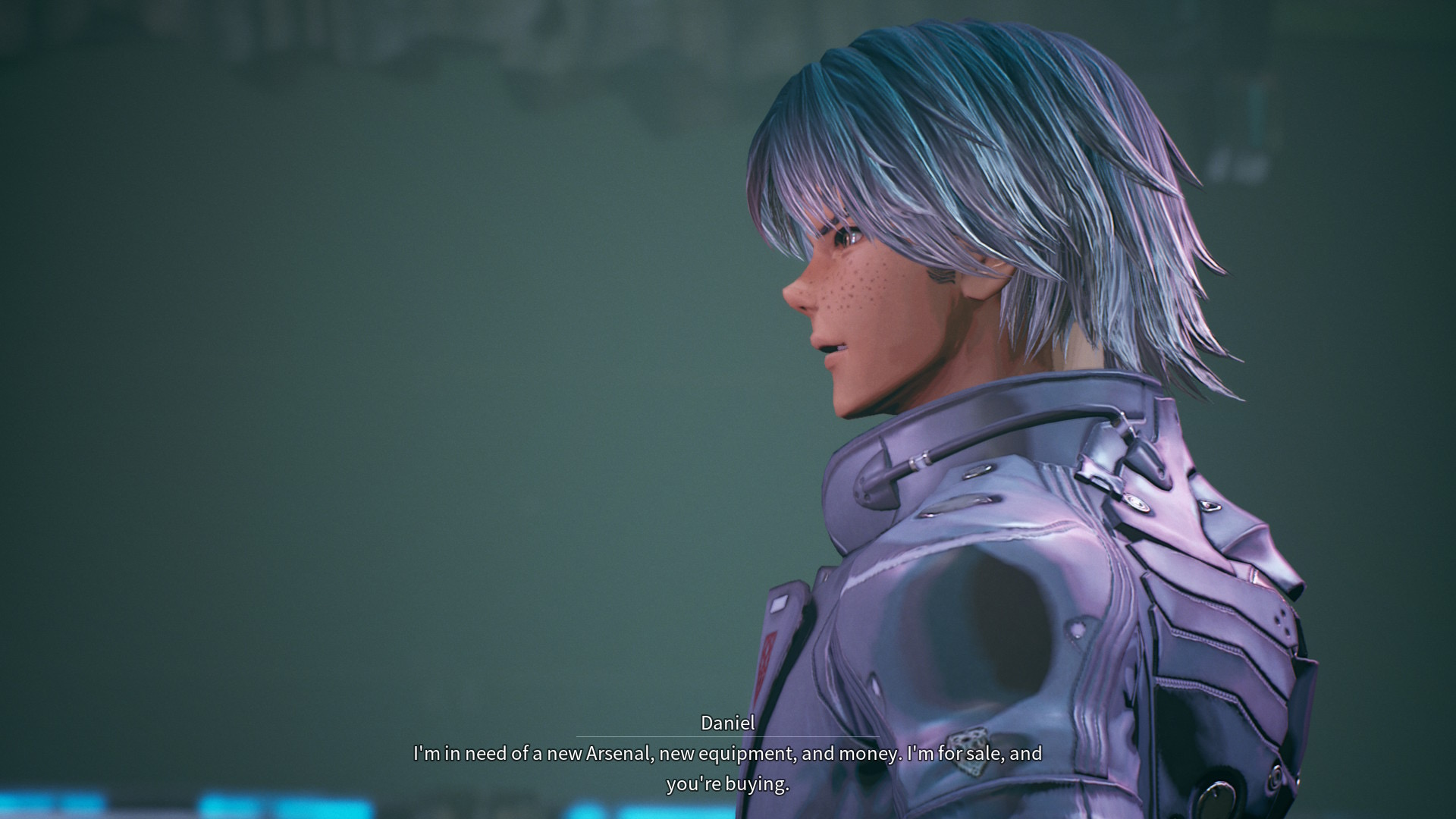
The player gets to create a custom character at the start of the game (with an admirably detailed character creator), and from there is launched right into the action. Through a fast-paced and thrilling opening sequence, it’s revealed that the player’s character is actually an Outer – one who’s on the verge of being unwillingly transformed into a mindless soldier. A friend named Nerve (I’m rolling my eyes as I write this) breaks him or her out, but the escape goes wrong; Nerve gets captured, and the player plummets to Earth from space, crashing into the desert. It’s from there that the protagonist decides to partner up with Reclaimers in an attempt to crush the Sovereign Axiom once and for all, and hopefully rescue Nerve in the process.
What follows is a fairly by-the-numbers story that is woefully lacking in any meaningful character development, and is generally pretty boring. The various Reclaimers who partner with the protagonist during missions are cookie-cutter personas that rarely have anything of value to say, and mostly exist as a conduit to verbally deliver mission objectives. It doesn’t help that the protagonist is a brash, cocky asshole from start to finish, nor that most of the other characters have exactly one defining personality trait (ex: the hotheaded guy who yells a lot, the mystic figure with strange powers, et cetera). The missions the player sets out on feel mostly unconnected to one another, which I suppose fits with the player’s role as essentially being an armed grunt for hire, but that doesn’t really make for interesting moment-to-moment storytelling. The game does attempt to incorporate some player choice by offering differing dialogue options to choose from in some conversations, but this generally seems to have little impact on how the story plays out beyond a few key scenes.
While this was all somewhat disappointing at first, at the end of the day it hardly mattered, because this is a game about shooting and/or slashing stuff as a mech. Technically, it’s not a mech you control per se – the Arsenals you control are much closer to the exosuits from a game like Anthem than the hulking machinery of an Armored Core title. This has the effect of not only making your character more agile, but also making the world feel much bigger, and more of an obstacle to traverse. It’s a smart design choice given the structure of Titanic Scion, and while it makes exploration feel different, it doesn’t impact the fundamentals of combat all too much.
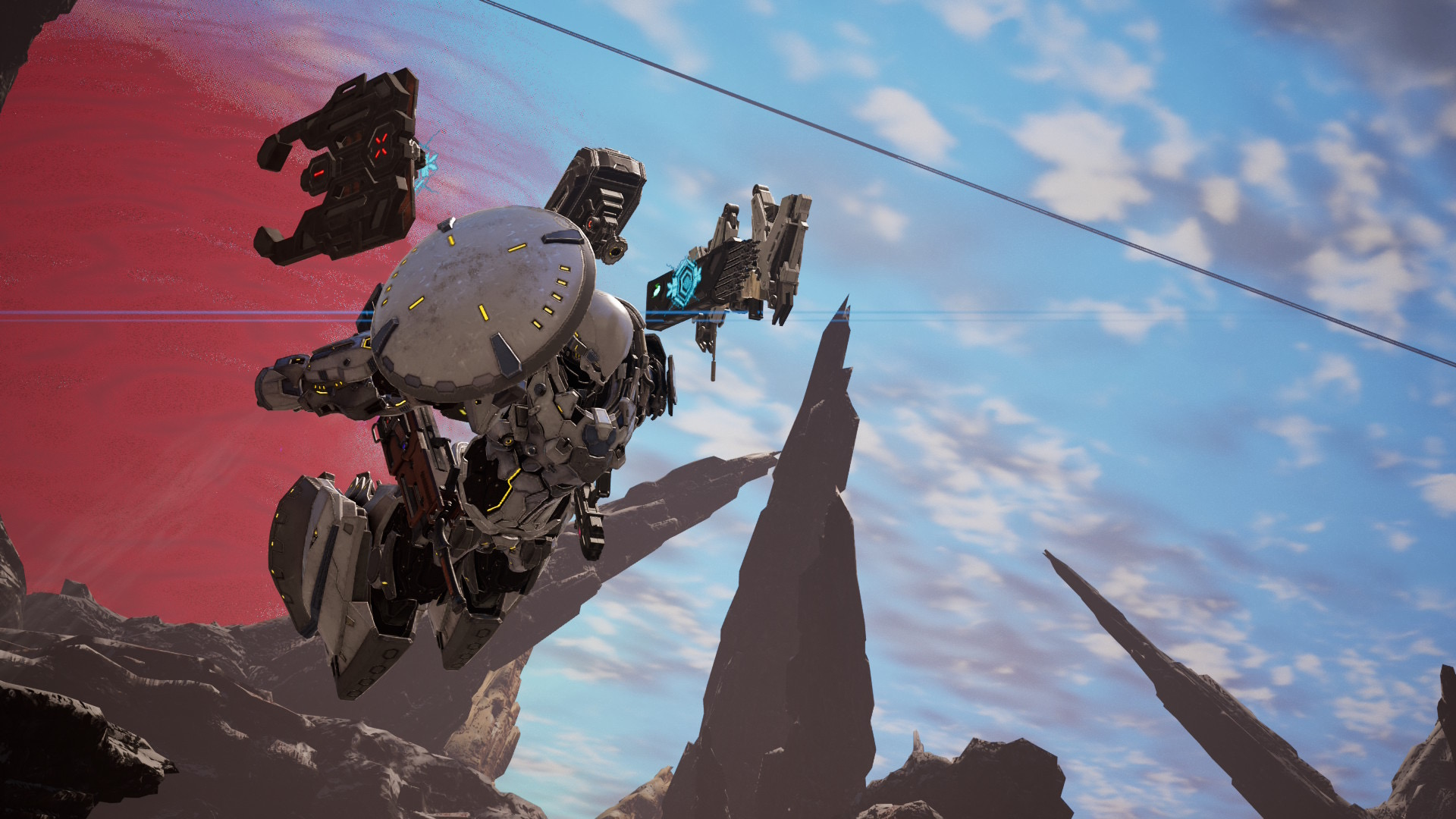
After accepting missions from the base, the player sets out into the open world, which is split into three massive maps unlocked over the course of the game. The open world is essentially a combat sandbox, a place to get into skirmishes and hunt down weapons, armor, and resources to strengthen your loadouts. Aesthetically, I was generally quite impressed with it; Titanic Scion’s world has interesting topography to fly around and through, and its desert biome in particular is probably one of the most visually distinct deserts I’ve seen in a game, with red sand that gets kicked up as you race through it, and all sorts of interesting landforms sprouting out of the earth.
Flying is far and away the fastest way to navigate, but you can’t fly forever; Arsenals use a resource called Femto for fuel, and without it you’re bound to the ground. This is especially true for heavier builds, which have many combat benefits but burn through Femto at a very high rate. What this often meant in practice was that I would frequently need to land and find a Femto Crystal to break, which would recharge my meter and let me fly again. It makes sense to some degree, but I actually I think I prefer Anthem’s recharge system, which let the player cool off quickly by easing off the thrusters or flying under a waterfall, keeping the momentum of movement going.
Interestingly, Titanic Scion also provides some other ways to get around. The silliest of the bunch is that you can ride horses, which is consistently amusing to behold; beyond that, there are various Warthog-esque vehicles scattered around, as well as a motorcycle (that somehow also transforms into a mech-like thing) which the player can summon from Supply Bases they build around the world. The physics powering these vehicles, however, is horrible. It can be amusing at times, but hitting even the slightest bump would often send me careening and tumbling, making all the vehicles utterly useless. Based on that description, you can imagine how much of a pain in the butt the optional racing missions would be to complete. I opted to fly or run about 90 percent of the time.
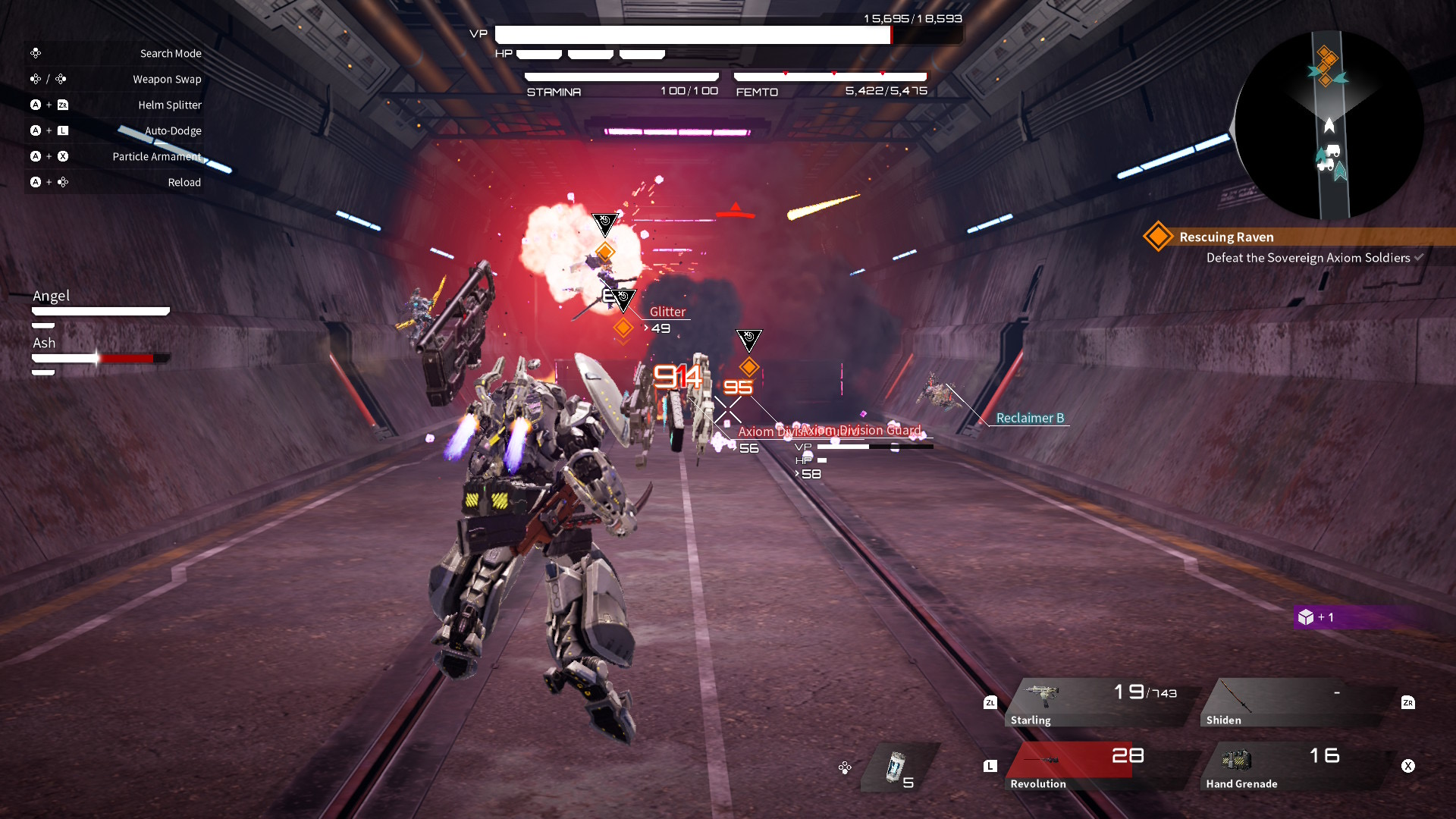
All the game’s story missions and side missions, excluding the opening and ending sequences, take place out in the open world, or in one of the many underground Sovereign Axiom bases scattered across the planet. Most missions feel unconnected to one another, and are pretty straightforward affairs that typically end with the player attacking everything in sight. There are some occasional escort missions and defense missions to spice things up, but for the most part, Titanic Scion prefers to just throw waves of enemies at the player and ask you to deal with them. It’s that, over and over again, for 30-40 hours. I was less than impressed with the copy-and-pasted enemy bases to clear, which are a mostly-optional series of bland metal hallways and rooms with the same enemies in them, repeated ad nauseum.
Outside of combat, I found most of the other types of missions and side activities to be pretty disposable. There’s an in-universe card game called Overbullet, but I found it bland and didn’t feel compelled to spend that much time with it. There are villages scattered across the game world, but little to do there other than play Overbullet or buy items from the store, so I stopped visiting them after a certain point. Back at the fort, you can enter Colosseum matches to battle against increasing tougher Arsenal-based foes. These are more fun, but not all that difficult in this writer’s opinion, so I ran that mode’s course fairly quickly. The game does have a fairly robust photo mode, which is a nice addition I enjoyed playing around with. At the end of the day though, there’s not much to do in this world other than fight your way through it, so don’t go expecting much beyond that. (That, and a “mining” minigame you’ll play dozens of times when farming resources – your mileage may vary there.)
So, that leaves us with the combat. In some games, doing exclusively that can get boring, but that’s the absolute last word I would use to describe battles here. Titanic Scion has one of the most customizable, versatile combat systems I’ve ever had the joy of engaging with in a third-person action game, and that mostly comes down to the seemingly infinite number of ways in which you can build your Arsenal. At any given time, you can have up to six weapons equipped and ready to go, many of which can be dual wielded. Your armor type dictates what exactly you can carry; lighter builds are incredibly nimble and quick but have lower defense and less space for heavy weaponry, while heavier builds are absolute tanks that move slowly but feel nigh unstoppable.
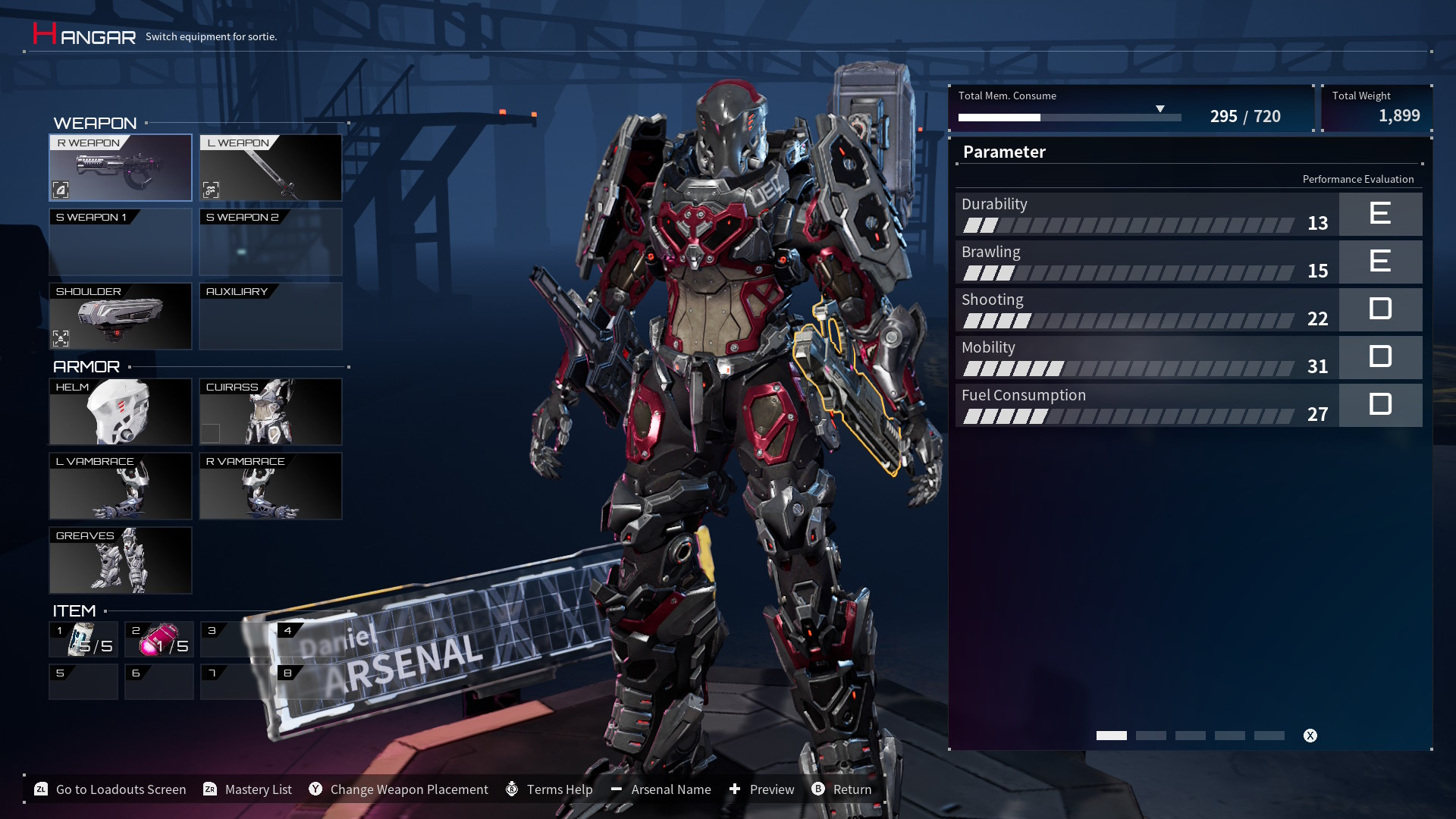
I was always changing my build during my playthrough, but my favorite way to go was with a heavy armor loadout. I’d often be wielding a shoulder cannon, a minigun, a bazooka, a mace, an energy sword and acid grenades – at the same time. Despite the slower speed this entailed, I was still performing mid-air dodges like it was no one’s business, and circling around foes to try and out maneuver them. Players can lock onto enemies with most weapon types and change targets on the fly, which I found critical. I chose to prioritize a combat build with a high thrust value, which essentially made it easier to close the distance between me and the monsters to land a melee attack. For the ranged part of my build, I opted to focus on the highest-possible damage-per-second and a high ammo count. This generally worked well for me, but I can also see how a more agile build with a bow and a shield could be great fun, especially when fighting bosses who have armor designed to be precisely chipped away at. In the heat of battle, there’s definitely a lot to manage, but this makes mastering it all the more satisfying.
Other weapon types in this game include flamethrowers, bows, arc rifles, shields… it just goes on and on. Every weapon and armor piece can also be customized individually by attaching components, which allow you to enhance your build overall by modifying attributes like defense, weight, and so on. Customization also occurs at the character level thanks to a system called Fusion, which allows to player to use genetic material obtained from defeated enemies to forge both active combat skills and passive abilities. Interestingly, this latter system modifies your character’s appearance with visual mutations, too; the in-game reason for this is that the more you modify the protagonist’s body, the less human they become. Consequentially, I opted not to use this system too much after a certain point, and was still able to get through the game totally fine without it, although I’m curious what would have happened had I not.
There’s so many more mechanics beyond even these that I don’t have time to wholly explain, including a system that lets you stagger and grapple foes in combat, special late-game armor, a weapon mastery system, and more. Rest assured that if you enjoy diving down the rabbit hole, there’s a lot to uncover here. This is a title for people who love min-maxing their build, comparing gear, optimizing loadouts, crafting new equipment, and so on. In fact, I would go so far as to say if you don’t enjoy those things, this is probably not the game for you, as I spent probably about seven or eight hours of playthrough doing exclusively that. I feel like a more casual approach would probably be a frustrating experience, with less attentive players probably not realizing just how many options they have available. The enemies do get progressively tougher in this game, and players who don’t keep up with their build will eventually start getting trounced, even on the easiest difficulty.
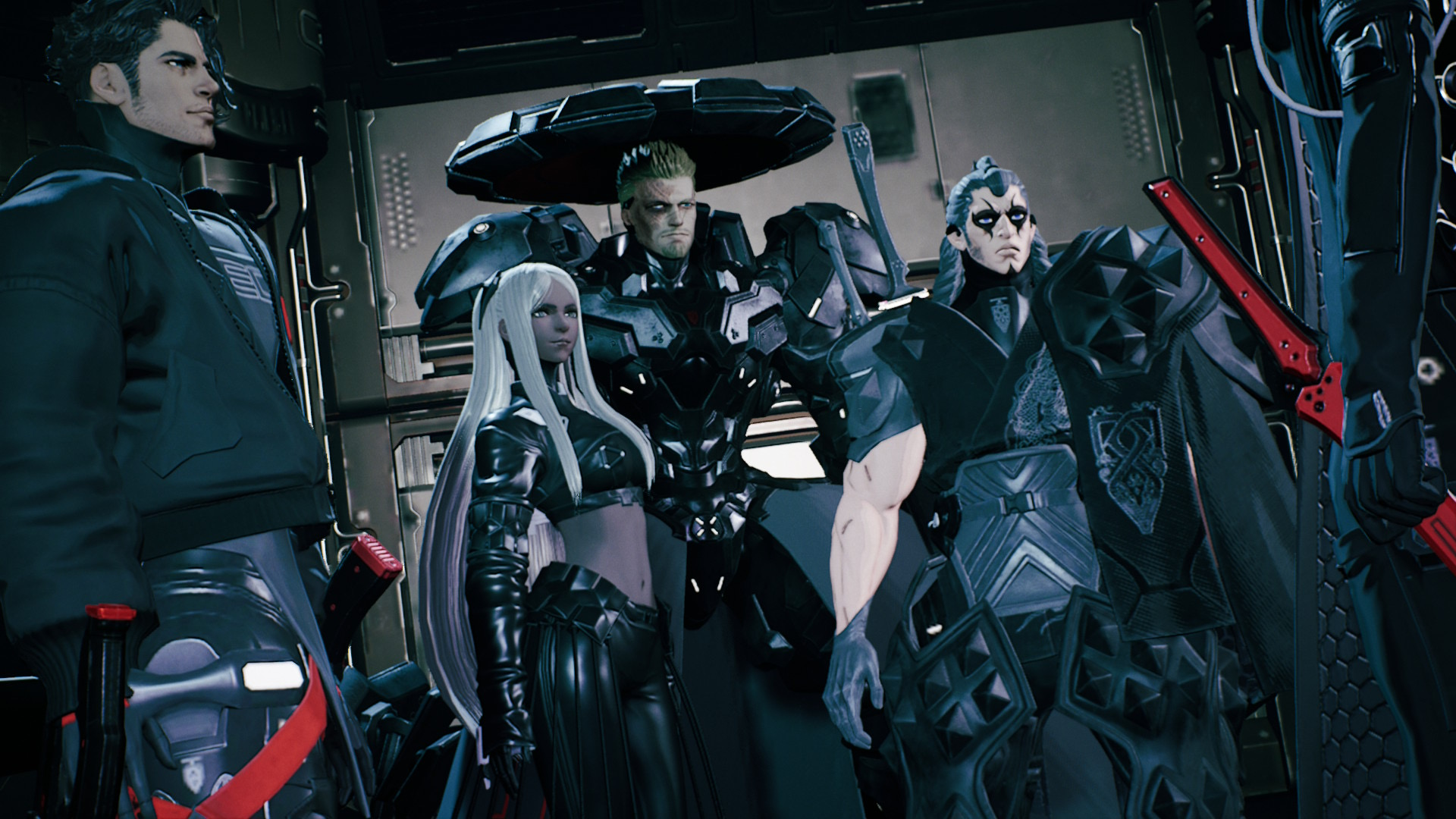
Enemy variety isn’t great when it comes to common foes, as there really are only a few varieties: Sovereign Axiom soldiers, and the ironically named Immortals (which, trust me, are very mortal, as I must have killed over a thousand of them). You’ve got your wolf-like things that hurl themselves at you, your flying things that try and shoot you or dive at you, your swarm things that try and overwhelm you (those ones suck)… and that’s about it! The boss battles, on the other hand, are awesome. Some of these are massive, building-sized Immortals that can deal immense damage in a single hit; a highlight for me included one that would launch itself into the air at random times and try and slam itself down on top of me. With these foes in particular, targeting certain types of armor with the weapons they’re weakest to is critical.
The other types of boss battles are the fights against the Neun (pronounced noin…yes, really), a very silly name for an only slightly silly group. This faction ties in more directly with game’s plot as this group of elite soldiers represent the second tier of leadership within the Sovereign Axiom, who you are trying to dismantle. They’re an angsty gang, obnoxiously so at times, but that does make them more satisfying to take down. Each of their fights feels unique; Gearhead can control machines during battle, Hex turns invisible until she’s hit with an attack, and Yaiba is.. a samurai mech dude. There are more, and taking them all down is a big part of the game’s story progression and a highlight of the game.
One element of Titanic Scion I was unable to test during this review period was the game’s seemingly robust multiplayer. The game can be played through almost entirely in online co-op, which sounds like a very fun way to explore, and it seems like there’s a comprehensive suite of both public and private matchmaking options. While it seemed like servers might have been live during prior to launch, I couldn’t find anyone to play with during the review period. I’m optimistic that it will perform well, as the game overall fares well with other NPCs battling alongside the player, but only time will tell here. The game does also have an asynchronous component; when players die, their Arsenals can be found around the game world as another place to scavenge gear. It’s also possible to encounter Supply Bases established by other players as a quick way to recover health or adjust your loadout.
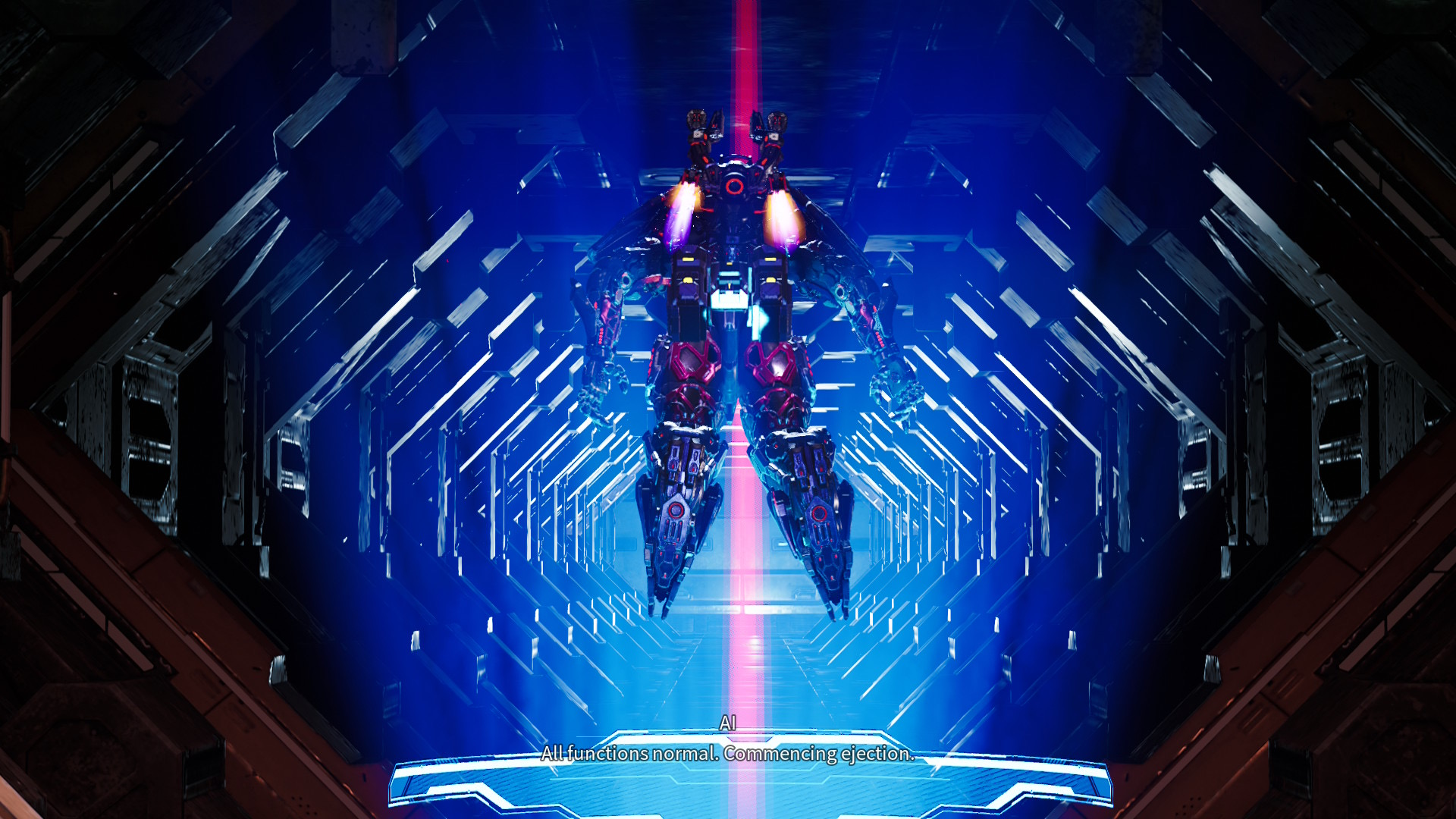
Visually, Titanic Scion is a pretty good-looking game, although I don’t think it will blow anyone away on Nintendo Switch 2. On one hand, elements of the game can look downright stunning, such as the beautiful vistas of the game’s environments. The scope is very impressive, and considering the size of the world I encountered very little pop-in or draw distance issues. The Arsenals themselves are meticulously detailed, lighting is generally solid, and combat looks stunning as a result. The game looks best at a distance and at speed.
On the other hand, characters’ facial models are embarrassingly low quality and poorly animated to boot, looking more like puppets than people. When they talk, their lips just flap up and down robotically, not exactly selling that this is a modern game. Ground textures and foliage can also be jarring to witness up close, getting stretched to the point where an shocking amount of pixelation is visible. Plant foliage looks at least a generation or two behind, and weather effects also don’t do the game any favors; at least for the Nintendo Switch 2 version they just tend to wash out the image altogether or make it impossible to see, which might be somewhat the point, but I digress. In terms of the frame rate, it mostly hovers around 30 FPS, but it does sometimes drop in certain areas or when there’s a lot of action onscreen. I should note that I did also encounter several crashes, which seemed to mostly occur when the game was trying to load the open world as I flew through it, perhaps too quickly for the engine to keep up. Embarrassingly, the game even crashed during the credits, which is not great.
These are all little things, and since this is such a fast-paced experience, in practice it’s not a huge deal, but the game certainly will look nicer and run better on other platforms. The tradeoff, of course, is that the game can be played portably here, which is a huge boon for a game with as many small tasks and grinding to do as this one. It’s a battery-sucker, though – I couldn’t get above about 2.5 hours of playtime from a full charge. Still, its exciting to see a world of this breadth looking as good as it does on such a thin device, and it has me optimistic for what other types of third-party releases may be possible on the platform in due time.
While Daemon X Machina: Titanic Scion’sstory and characters didn’t maintain significant interest, and its open world structure can feel a bit undeveloped at times, the game excels at being a combat sandbox with seemingly endless depth. The general loop of thrilling combat, salvaging equipment, and detailed build customization was remarkably engaging, and I enjoyed exploring and battling my way across the alien world that Marvelous has crafted here. Despite some visual hiccups, the game generally looks good and runs well on Nintendo Switch 2, delivering on its promise of a sprawling sci-fi action-adventure. No matter how you build your Arsenal, if you can get invested in the gameplay rhythm on offer here, you’re likely to have a great time.
Daemon X Machina: Titanic Scion copy provided by the publisher for the purposes of this review.
